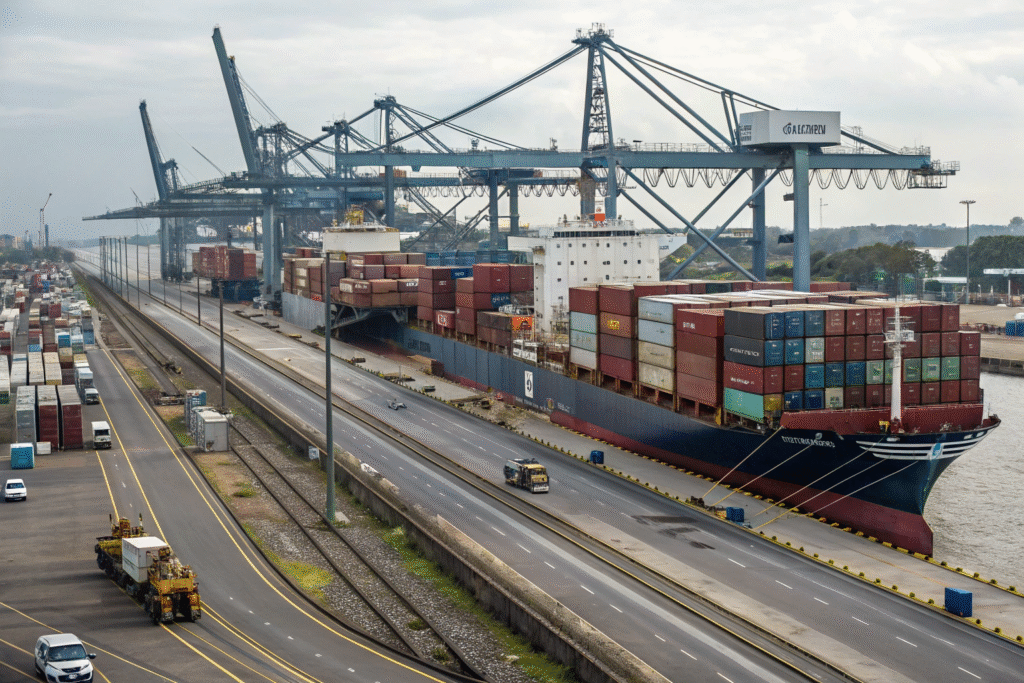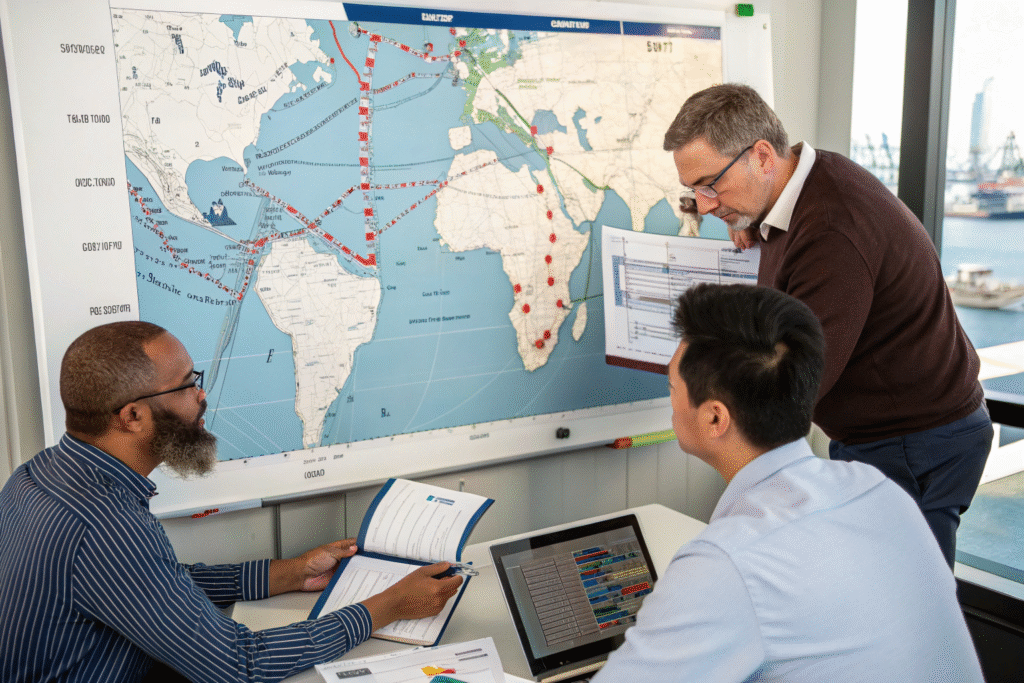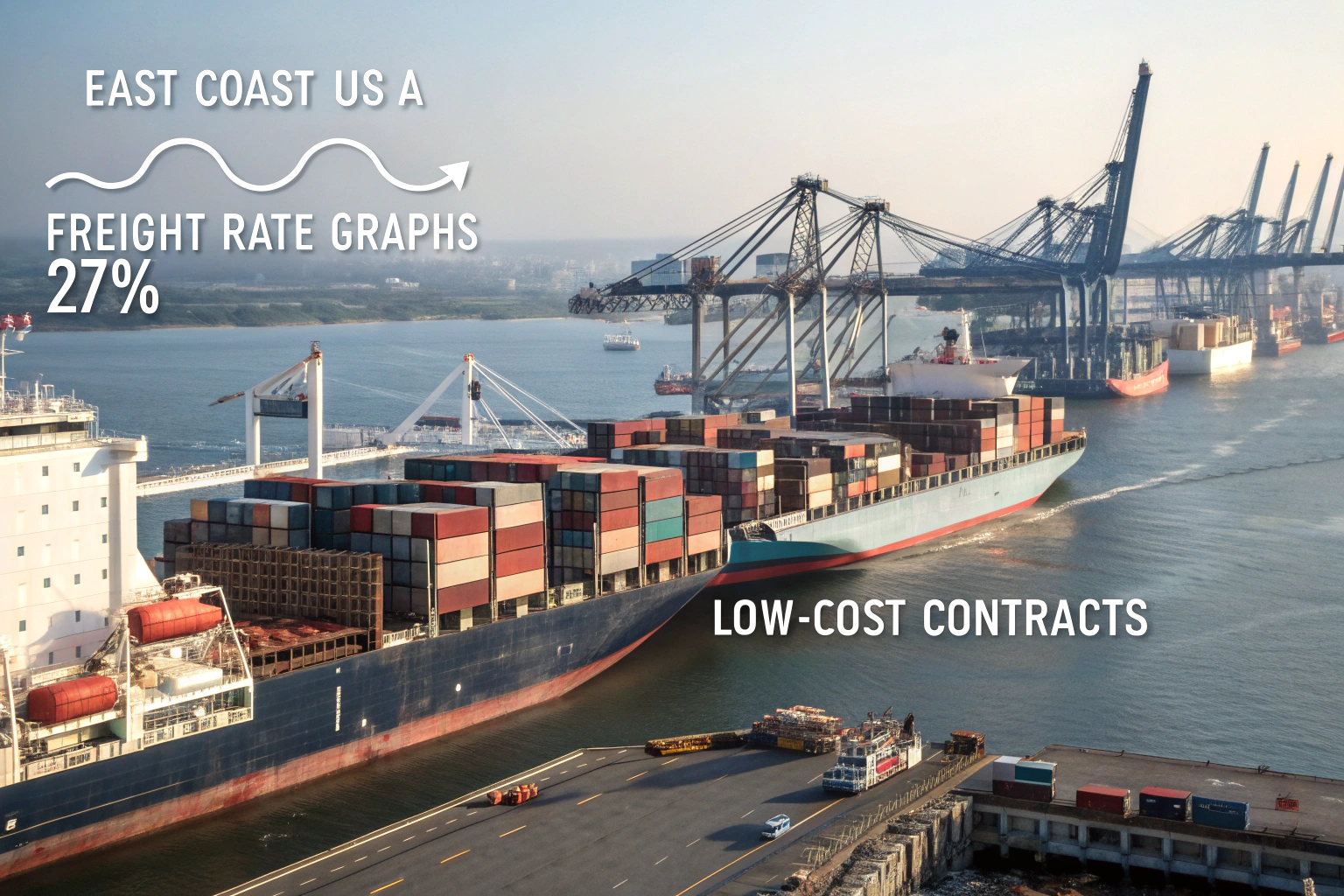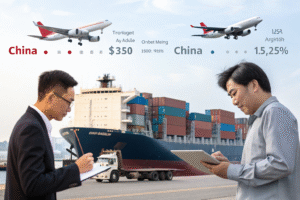In July 2025, something unusual is happening on the Asia–U.S. East Coast (USEC) route: too many ships and not enough cargo. The result? A surprising and dramatic drop in shipping costs. We’re seeing spot rates down by as much as 27% compared to May.
This overcapacity is giving importers a unique, cost-saving opportunity—especially those shipping bulk goods like clothing and accessories from China to ports like New York, Savannah, or Norfolk. But this price window won’t last forever.
In this post, I’ll explain what’s driving the overcapacity, how it affects freight rates, and how smart importers can lock in lower costs before rates rebound.
What’s Causing Overcapacity on Asia-USEC Routes?
Overcapacity occurs when more cargo space is available than the market demands. On the Asia-USEC trade lane, this imbalance is being driven by three key factors.
Carriers deployed extra capacity ahead of an expected peak season, but consumer demand has cooled. That mismatch is flooding the market with vessel space. With lower booking levels, freight forwarders like us can now negotiate extremely favorable rates.

Why Did Carriers Add So Many Ships?
In early 2025, carriers anticipated a strong rebound in U.S. retail restocking. To prepare, they:
- Deployed more Ultra-Large Container Vessels (ULCVs)
- Diverted capacity from the US West Coast to East Coast ports
- Added new port pairs like Qingdao–Charleston and Xiamen–Savannah
According to Alphaliner, capacity on the Asia–USEC route has risen by 18% year-over-year.
Carriers wanted to capture high-paying contract cargo, but when retail orders slowed in Q2, this excess space started undermining rates.
Is Low Demand Making the Problem Worse?
Yes. U.S. importers have become more cautious. Many are:
- Holding less inventory
- Delaying restocks
- Shifting to shorter lead times
The result is lower vessel utilization—sometimes under 75% on key sailings. Carriers are now competing aggressively to fill those slots, which is pushing down spot rates.
Data from FreightWaves shows that some lanes from China to USEC have fallen below $3,000/FEU, down from over $4,000 in May.
How Does This Drop in Rates Benefit Importers?
If you’re shipping full containers—or even large LCL volumes—from China to the U.S. East Coast, this is the perfect time to save on logistics.
On average, rates have dropped by 27% in July compared to late Q2. These savings can improve your margins, reduce landed costs, or be reinvested in faster inventory cycles.

What Types of Shippers Benefit the Most?
You benefit the most if you:
- Ship bulk orders (FCL or 10+ CBM LCL)
- Use East Coast distribution centers (e.g., New Jersey, Georgia)
- Import from southern or eastern Chinese ports (e.g., Xiamen, Ningbo)
- Can adjust sailing schedules slightly
Brands importing fashion, accessories, footwear, and seasonal items are currently seeing significant reductions.
We’ve used platforms like Shifl and Freightos to lock in discounts up to 30% for clients moving volume via USEC.
How Much Could I Actually Save?
Here’s a typical case:
| Shipment | May Rate | July Rate | Savings |
|---|---|---|---|
| 1x40’HQ from Ningbo to Savannah | $4,200 | $3,100 | $1,100 (26.2%) |
| 12 CBM LCL Xiamen to NY | $2,100 | $1,580 | $520 (24.8%) |
Multiply that across 10+ containers per month, and the savings are dramatic.
What Risks Should Importers Watch Out For?
Cheaper freight isn’t without risk. With lower rates and high vessel availability, carriers may also introduce countermeasures that disrupt your schedule.
Expect blank sailings, port skipping, or re-routing—tactics meant to rebalance vessel utilization and stop rates from falling further. So while costs drop, timing and reliability can become less predictable.

Will These Low Rates Last?
Unlikely. Carriers are expected to:
- Cancel 20+ USEC sailings in August to curb supply
- Introduce General Rate Increases (GRIs)
- Consolidate port calls to reduce costs
Platforms like Sea-Intelligence project USEC rates could rise by 10–15% by mid-August as capacity tightens.
So now is the window to take advantage before supply corrections kick in.
How Can I Avoid Blank Sailing Delays?
We recommend:
- Booking 2–3 weeks in advance
- Using multiple port options (e.g., NY + Norfolk)
- Splitting cargo across sailings
- Choosing forwarders with guaranteed space contracts
We work with carriers under fixed rate and priority space programs to avoid rollover. Tools like Project44 help us monitor vessel schedules and act early if disruption is likely.
What Should Importers Do to Capitalize Now?
This July offers a rare moment of freight savings on Asia–USEC lanes. But you need to act now—because carriers are already planning corrective actions.
At GeeseCargo, we’re helping clients renegotiate contracts, shift to East Coast gateways, and reallocate shipments for optimal timing and cost.

How Can I Lock in These Lower Rates?
- Sign short-term fixed rate contracts (30–45 days)
- Ship during early-week sailings for lower utilization
- Use DDP terms to bundle cost, duty, and delivery into one
- Partner with a forwarder who can commit space across carriers
We offer cost comparison tools using Xeneta and internal benchmark pricing to identify the best weekly windows.
Is the USEC Still Better Than the West Coast?
It depends on your final destination. In July, the USEC offers:
- Lower freight rates
- Less labor disruption than West Coast ports
- Direct rail links to Midwest and East Coast cities
However, transit times are longer—up to 35 days from China. If time allows, the savings are well worth it.
We guide clients lane by lane to see if switching makes financial and logistical sense.
Conclusion
Overcapacity on the Asia–U.S. East Coast route has created an unexpected chance for importers to save big. With shipping rates down by up to 27%, July is a strategic time to ship bulk orders and renegotiate contracts.
At GeeseCargo, we’re here to help you move fast and smart. We monitor rate changes daily, manage blank sailing risks, and ensure you don’t miss these savings. This freight market shift won’t last—act now to benefit before rates bounce back.









